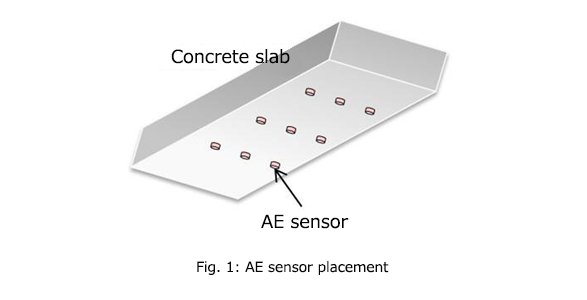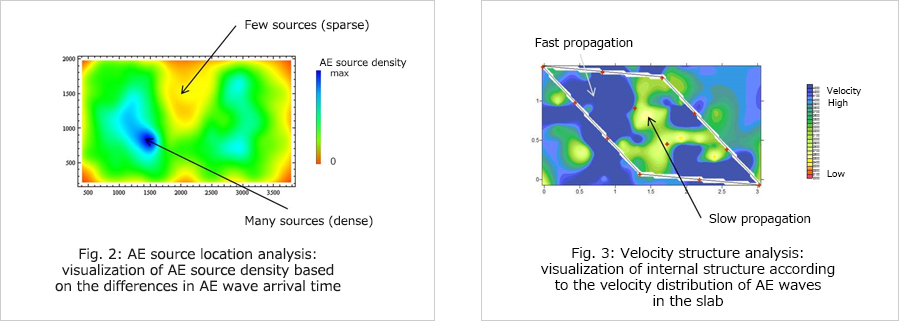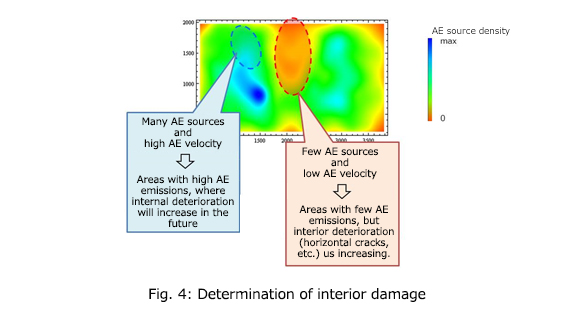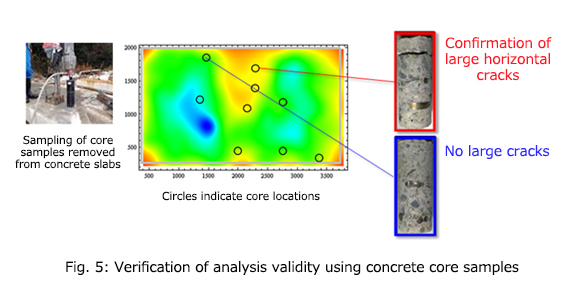Toshiba's New Technology Achieves Nondestructive Sensing of Internal Deterioration in Concrete Structures
Overview
Toshiba Corporation, in collaboration with Professor Tomoki Shiotani of Kyoto University, has applied advanced acoustic sensing technology to high-precision assessment of concrete structures and developed a technique for successfully visualizing internal deterioration in highway bridges. The new technology utilizes acoustic emissions(Note 1) to identify the location of internal defects such as voids and cracks that are invisible on the surface.
Details of this technology will be presented at the Annual Meeting of the Japan Society of Civil Engineers, on 9 September at Tohoku University, and at the MEMS Sensing & Network Systems exhibition at Pacifico Yokohama (14–16 September 2016).
Background
At present the rate of deterioration of bridges and other civil engineering infrastructure built during the period of Japan's rapid economic development is becoming a matter of public concern. At the same time, the country's labor force is shrinking, which may lead to a shortage of infrastructure inspectors. As a result, non-destructive testing (NDT) technologies that can carry out fast, efficient investigations of internal defects in structures are in high demand.
Features of the technology
Toshiba's new technology analyzes data from sensors and visualizes internal defects in concrete slabs used of the floors of bridges. This patent-pending technology employs acoustic emissions (AE), using highly sensitive sensors to detect waves generated by the damage to estimate the location of defects that are invisible on the slab's surface. Data detected by the sensors (Fig. 1) directly allow identification of the AE sources (Fig. 2) and represent actual damage. In addition velocity distributions in the concrete can be evaluated by an advanced inverse method based on the multiple paths of AE wave propagation, securing more accurate damage mapping within the concrete (Fig. 3). A key advantage of the new process is that the technology can be applied and testing undertaken without closing bridges and stopping traffic flows.



Toshiba has successfully verified the effectiveness of this advanced technology by applying it to an in-service bridge. The analysis results were directly compared with core samples taken at random from the concrete slabs(Note 2), which confirmed high agreement between the estimates of damaged areas and damage found in the core samples.

Future developments
Toshiba will continue to validate this promising technology towards early commercialization.
Note, this technology includes results from the "Systems Development Project to Address Social Issues Related to Infrastructure Maintenance, Management, and Renewal" supported by the New Energy and Industrial Technology Development Organization. This great support is highly appreciated.
- (Note 1)
- "Acoustic emissions" refers to wave phenomena generated by fine fracture within solids.
Earthquakes can be considered as extremely strong acoustic emissions. - (Note 2)
- "Base slabs" here refers to concrete materials that directly support vehicles passing over bridges. They are widely used worldwide.


